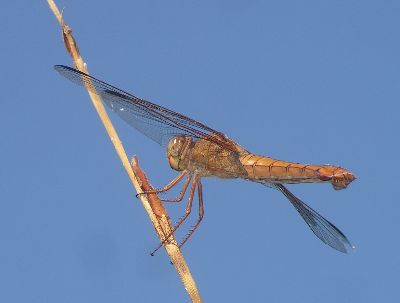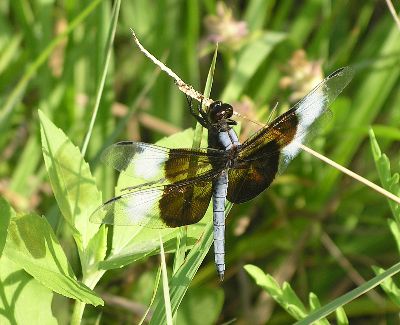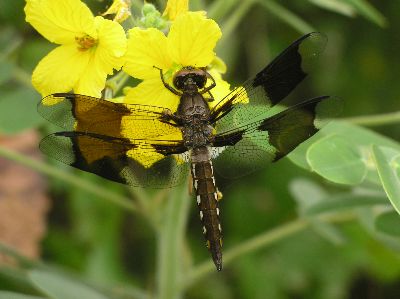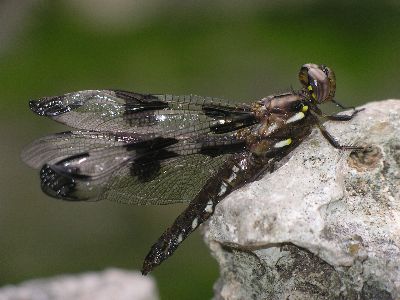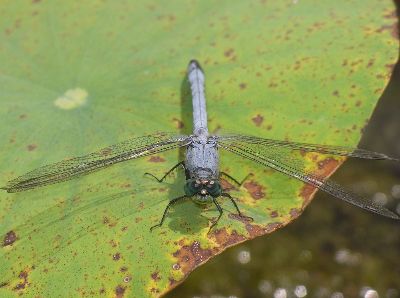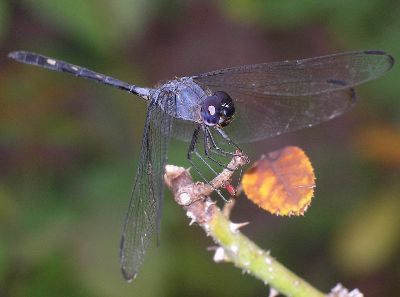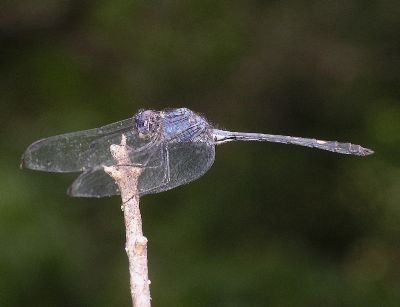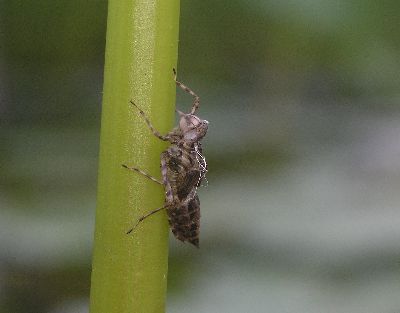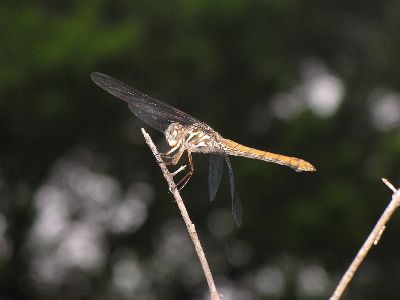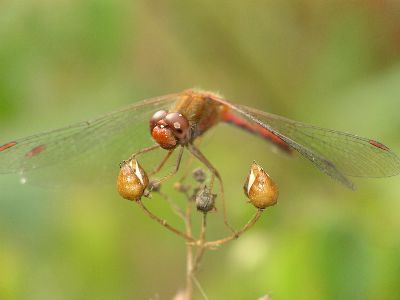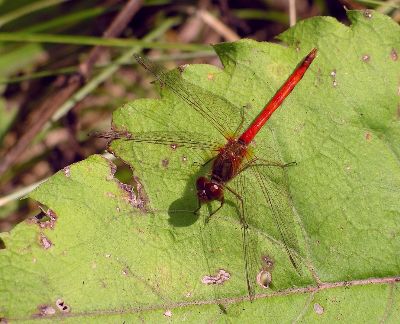The images presented in these galleries are reductions of photos taken by Valerie with a Pentax Optio 450 digital camera. The compression has been increased to 80% (100%=no compression) and the dimensions reduced in order to save bandwidth and facilitate page loading. The information below each image gives the size in pixels and kilobytes of the original file as well as the title by which to request the larger version. All of the original files are in jpeg format, most at about 95% compression, and are suitable for printing, desktop wallpaper, or detailed study. While the images here are free for the taking (right click - save as; do not link to these images directly), the larger versions are also available by sending a request to Valerie via . The frames around the gallery photos are not part of the same file and are only for presentation on this site.
Although the photos are free to use, they are copyrighted by LARVALBUG and remain the property of the owners of this site. We request that any public use of these images be accompanied by a credit to LARVALBUG.COM and, when appropriate, a link to our site (<a href="http://www.larvalbug.com/">LARVALBUG</a>). Commercial use of the large files can be arranged for a modest fee.
To request larger files or ask any questions please send an e-mail to Valerie at .
|
|
Dragonflies are both a delight and a challenge to photograph. Their stunning colors and large size make them one of the best insect subjects, but they are also wary and have excellent eyesight. Several species are presented here, and a separate gallery is devoted to the Blue Dasher (Pachydiplax longipennis). More information on the Neon Skimmer (Libellula croceipennis) is available at larvalbug's garden.
Female Neon Skimmer (Libellula croceipennis). Posed in a classic dragonfly position, this individual was resting high above the edge of the water. The females of this species are a golden brown. They are more often seen laying eggs than resting.
Male Neon Skimmer (Libellula croceipennis). This dragonfly is the most frequent visitor to our backyard ponds. It is also quite common at Zilker Gardens. The males aggressively patrol the area around the water, chasing each other and sometimes even approaching humans. They like to find a perch where they can watch everything. Their brilliant color makes them easy to see, whether they are at rest or flying.
Another male Neon Skimmer. The amber tint on the wings is evident in this view. Neon skimmers are members of a genus referred to as the "King Skimmers," partly because they tend to dominate ponds with their territorial behavior and large size.
Male Widow Skimmer (Libellula luctuosa). Although I more often see dragonflies flying, I have only been able to photograph them when they are at rest. Early in the morning on cool days is a very good time since the insects need to warm up before flying and so can frequently be seen sunning themselves.
The Common Whitetail (Libellula lydia), the male of which is shown above, is another of the king skimmers. This one is not quite as common as its relatives, but does show up regularly. I've seen it more frequently at a distance from water than close by.
This is also a male Common Whitetail, but it is an immature one. Many dragonflies do not emerge in their adult forms with their mature colors. These gradually appear over about a week. This insect can be identified by its wing patterns, but the body colors are more like the female. They will eventually change to the pale blue of the adult.
The unfortunate insect shown above had fallen into a pond at Zilker Gardens. It probably did so after emerging from its larval shell and its wings did not have a chance to expand and harden into the normal shape. It was very much alive when I pulled it out of the water and set it on a nearby rock, but it would not be able to fly. It is a female common whitetail, the wing patterns being diagnostic for identification.
Male Eastern Pondhawk (Erythemis simplicicollis). I've only seen this species once at Zilker Gardens. I hope to observe it again, as it is reported to be one of the most aggressive hunters among dragonflies, known to attack even members of the same species.
Male Band-winged Dragonlet (Erythrodiplax umbrata). The blue coloring that occurs on some dragonflies is a sort of waxy powder called pruinescence. This species is actually black but becomes slightly pruinose with age, hence the blue color.
The male Black Setwing (Dythemis nigrescens) is one of the most frequently encountered dragonflies in Zilker Gardens. It is quite slender and often perches low to the ground. Although it is black, pruinescence makes it appear blue, especially under certain lighting conditions.
A side view of a male Black Setwing. The common name comes from the way the dragonfly tends to hold its wings when perching.
Another view showing the characteristic pose of the Black Setwing when it is resting. Although this dragonfly lacks brilliant colors, it is easily recognizable by its slender build and dark color.
Dragonflies spend their larval stages as aquatic nymphs. When one is ready to emerge as an adult, the larva climbs up out of the water and the adult form molts or sheds its shell, leaving it behind when it eventually flies off.
Female Roseate Skimmer (Orthemis ferruginea). This species is the only member of a genus referred to as Tropical King Skimmers that occurs north of Mexico. As with many dragonflies, the female looks quite different from the male but is still distinctive enough to identify.
The male Roseate Skimmer is one of our most stunning dragonflies. The bright pink of its body is overlaid with a pruinose blue that makes it seem to glow in the sun. Even in flight, the color stands out so much that no other dragonfly could be confused with this one.
Female Calico Pennant (Celithemis elisa). This dragonfly was photographed in Wisconsin during June. The wing patterns are a sure way of identifying this species. The males have similar body markings but they are red instead of yellow.
Although this species also occurs here in Austin, Texas, this male Yellow-legged Meadowhawk (Sympetrum vicinum) was photographed in Wisconsin during September. This remarkable dragonfly is capable of flying at lower temperatures than most species and we see it in Zilker Gardens throughout the winter.
Another view of a Yellow-legged Meadowhawk, also taken in Wisconsin. Although the red of its abdomen is not as brilliant as the neon skimmer, in the right lighting it stands out beautifully.
|
